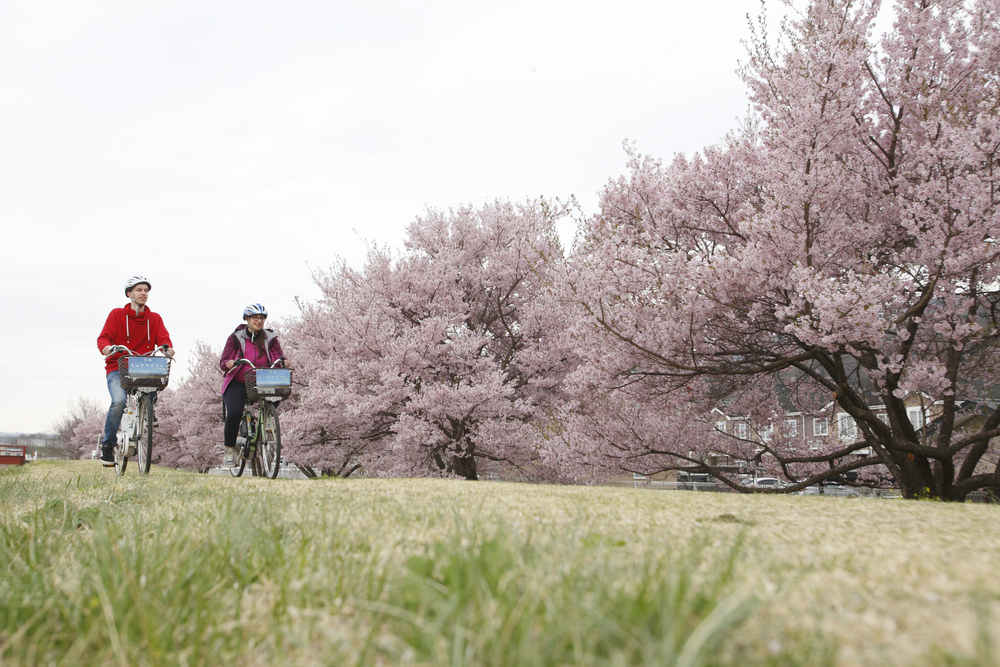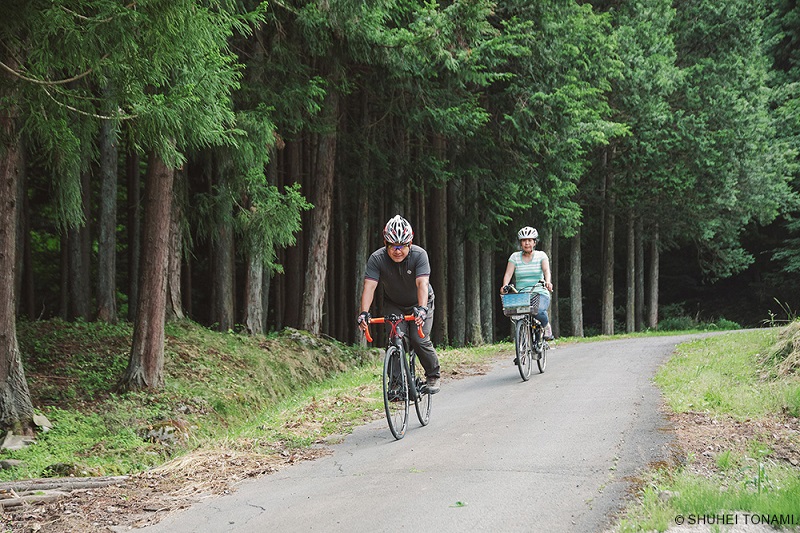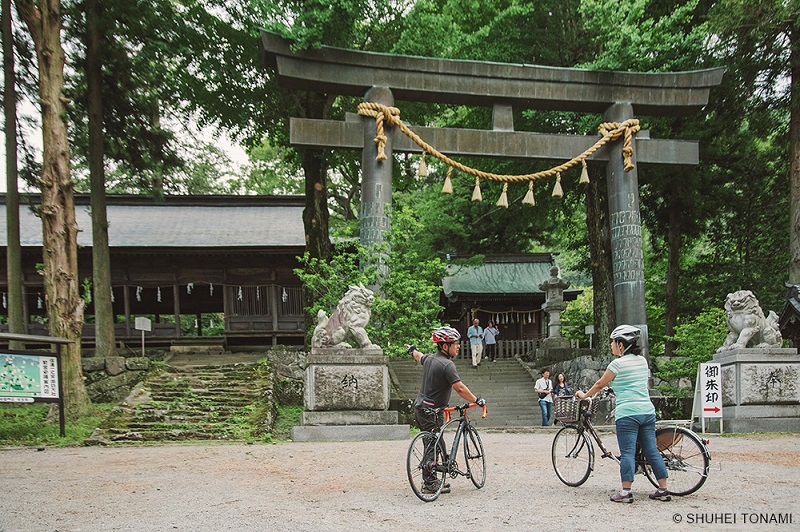Suwa Taisha Spiritual Cycling

Cycle through central Nagano and see some of its most ancient shrines.
Suwa Taisha, the spiritual heart of the Suwa area, is one of Japan's oldest sanctuaries. Nobody knows exactly how far back its history goes. What we do know is that its existence is mentioned in the Kojiki, the country's first written text dating back to the seventh century.
The shrine is made up of four complexes, the two upper shrines of Maemiya and Honmiya on the southern side of Lake Suwa, and the two lower shrines of Akimiya and Harumiya on the northern side.
On this tour, you will head for the two upper shrines, where nature worship still has a central role in the community's spiritual life. You will also pass by the Jinchokan Moriya Historical Museum and the three teahouses of Takasugi-an, Hikusugi-an, and the Flying mud boat, where you will encounter the imaginative and quirky architecture of Fujimori Terunobu.
Tour the Countryside on an E-bike

On beginning your tour, you first check in at the Chino Tabi counter, located inside JR Chino Station. Your guide will welcome you and help you get prepared.
Your ride for this activity is a pedelec, an electric bicycle. If you switch the controls off, it is just an ordinary road bike, but when you turn it on, you can leisurely climb the steepest slopes (and you will encounter a few).
The course itself is easy, and with a pedelec, anyone able to ride a bike can complete it without breaking a sweat. If you are looking for intense cycling, you may want to look elsewhere.
Cycle to Maemiya, Suwa Taisha’s Most Ancient Shrine

For starters, you will head for Maemiya, an unorthodox shrine that merges with nature and mundane space. On the way there, you will ride along the banks of Miyagawa River, passing under a row of cherry trees that turn a pretty pink in spring and a fiery red in autumn.
On the way to the shrine, you will stop by a shop selling kanten (agar), a local freeze-dry preserved food made with agar seaweed, which is produced during the coldest months of winter. One of the main ingredients of yokan (a classic Japanese sweet), kanten made in Chino is requested by numerous renowned confectionery shops all over the country.
After a tasting of some kanten products, you will reach Maemiya. The most impressive characteristic of this shrine is the way it interacts with nature. Here, every key point is marked by magnificent centenarian trees, and the ritual ablutions to purify your body before prayer are performed at a mountain stream.
The site of the hall of worship, like all Suwa Taisha shrines, is marked by four gigantic pillars. These are erected once every seven years during the primeval festival of Onbashira, one of Japan's riskiest events, when the locals drag big trees down the Yatsugatake Mountains by manpower alone and ride them in a ritual performance where many put their lives on the line.
See Fujimori Terunobu's Fairytale-like Architecture

Instead of heading straight for Honmiya, you will make a detour for Fujimori's tea houses and the Moriya Historical Museum. To get there, you will cycle through some homes and vegetable patches, approaching the tea houses from the back.
Takasugi-an (the too-high tea house), Hikusugi-an (the too-low tea house), and the Flying Mud Boat make up the Suwa tea house series by the up-and-coming architect Fujimori Terunobu. Your inner child will be excited by the sight of the blowfish-like house suspended in midair. As the three structures are closed to the public, you can only see them from the outside, but their fantastical appearance and the way they merge into the natural environment make them worth the visit.
%20.jpg)
A few meters away, there is another building designed by Fujimori, the Jinchokan Moriya Historical Museum. The first work ever by the architect, the edifice has an eccentric style that is neither classic nor modern.
Its intriguing look is not the only point of interest of the museum, though. Built for the preservation and display of the over 1600 documents collected by the Moriya family over the centuries, it contains some of Japan's oldest written texts.
The Moriya family also played a fundamental role in Suwa’s religious scene for generations. The history of this household goes hand in hand with that of the sanctuary. As part of the tour, it’s also possible to visit the small exhibition before carrying on with the cycling.
Take a Tea Break at a Small Café
%20.jpg)
About one kilometer from the Jinchokan historical archives is Honmiya, the last destination on the tour. But there’s no hurry to finish the tour. Why not take a break with a cup of tea?
The guide will take you to Tea Garden Kameishi, a small café inside a local stonemason’s house. The artisan's wife serves tea and delicious local treats.
%20%20.jpg)
It would be a pity to leave without trying some typical kanten-based dessert. That is why the owner will prepare some homemade tenyose (agar cake) to go with your tea.
Visit the Honmiya Shrine
%20.jpg)
The last stop of this tour is Honmiya, the main complex of the upper shrines. Built to hold the plentiful sacred rituals which animate the region's spiritual life, this is the largest and most elaborate of the Suwa Taisha shrines.
The guide will show you around the shrine, pointing out the various highlights, such as the detailed carvings of the shrine buildings and the massive ceremonial drum.
%20.jpg)
The Suwa area is famous for its hot springs, and at Honmiya, there is a spring where you can perform ablutions with thermal spring water.
On the way back, you will cycle along the opposite bank of the Miyagawa River and then go through back alleys until the station.
The tour is private and is organized upon request.
Update:2020/07/09
| Operating Period | April to November |
|---|---|
| Time | 9:30 to 12:30 or 13:30 to 16:30 |
| Reservations | Necessary (via Chino Tabi Website) |
| Price | 5,000 yen per person (excluding tax) |




